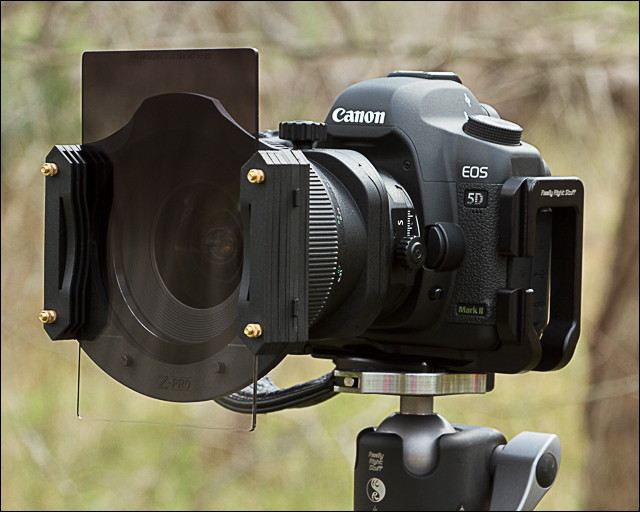Unless you’ve been living off world for the past few years, you know that Canon has introduced several new full-frame DSLR cameras, the EOS 5D Mark II, the EOS 5D Mark III and now the brand new EOS 6D. In the coming weeks and months there will be reviews galore posted on the various industry watching blogs with in depth discussions of EOS 6D’s features and benefits. Folks that recently purchased the 5D Mark II, 7D or 5D Mark III may start to feel “buyers remorse” and “upgraders envy” over the perceived differences between their camera and the new EOS 6D. The amount of forum traffic on DPReview.com will jump as folks begin to post their rants and raves about this new camera.
To help cut through some of the rhetoric I thought I’d post a quick and dirty comparison of these three full-frame cameras based upon the information currently available. Basically, the same comparison I posted a few years ago on the new G12, G11 and G10 cameras. Let me state for the record that this comparison is from a still photographer’s perspective only. The video capabilities of these cameras are cool but not where my interests lay.
List Price:
5D2 – $2199 (USD)
5D3 – $3499 (USD)
6D – $2099 (USD)
Sensor:
5D2 – FF (5616 x 3744) (20.6 MP)
5D3 – FF (5760 x 3840) (22 MP)
6D – FF (5472 x 3648) (23.4 MP)
Processor:
5D2 – DIGIC 4
5D3 – DIGIC 5+
6D – DIGIC 5+
ISO:
5D2 – Auto, 100 – 6400 in 1/3 stops, plus 50, 12800, 25600 as option
5D3 – Auto, 100 – 25600 in 1/3 stops, plus 50, 51200, 102400 as option
6D – Auto, 100 – 25600 in 1/3 stops, plus 50, 51200, 102400 as option
Metering:
5D2 – 35 Area Eval, Center Weighted, Partial, Spot
5D3 – 63 Area Eval, Center Weighted, Partial, Spot
6D – 63 Area Eval, Center Weighted, Partial, Spot
Auto Focus:
5D2 – 9 Point
5D3 – 61 Point (new technology)
6D – 11 Point
Exposure Compensation:
5D2 – ±2 EV (at 1/3 EV, 1/2 EV steps)
5D3 – ±5 EV (at 1/3 EV, 1/2 EV steps)
6D – ±5 EV (at 1/3 EV, 1/2 EV steps)
Continuous Shooting:
5D2 – 3.9 fps
5D3 – 6 fps
6D – 4.5 fps
Raw Formats:
5D2 – RAW, sRAW1, sRAW2
5D3 – RAW, sRAW, mRAW
6D – RAW, sRAW1, sRAW2
Viewfinder:
5D2 – Pentaprism, 98% Coverage, 0.71x Mag
5D3 – Pentaprism, 100% Coverage, 0.71x Mag
6D – Pentaprism, 97% Coverage, 0.71x Mag
Battery:
5D2 – LP-E6 ($66 USD)
5D3 – LP-E6 ($66 USD)
6D – LP-E6 ($66 USD)
Weight:
5D2 – 850g
5D3 – 860g
6D – 822g
Some Initial Conclusions:
The flame wars have already started on the new EOS 6D as they do anytime Canon releases a new DSLR camera.
The comparison between the 5D Mark II and the new 5D Mark III is very easy to judge in most respects with the 5D Mark III offering some very compelling new features such as the increased resolution, the DIGIC 5+ processors, the very high 6 fps continuous frame rate, the new metering system and the brand new auto focus system. If the high ISO performance of this new 21 MP sensor is at least as good as the 5D mark II’s, then the new 5D Mark III is a sure fire winner for anyone looking for a high-end full-frame body.
The comparison between the brand new 6D and the 5D mark III is much more difficult since Canon opted to add some nice new features (such as internal GPS & wireless) but not nearly as many as they did to the more expensive 5D Mark III. The single biggest difference between these two cameras is the much more advanced auto focus and metering systems in the 5D Mark III. Only time will tell if the new 11 point AF system in the 6D is significantly better than the system found in the older 5D Mark II. I suspect the difference in price between these two models will be the deciding factor for most hobbyists.
Final Thoughts:
In the words of David duChemin, “Gear is Good, Vision is Better”. It’s not the camera that makes the photograph, it’s the person behind the camera. Don’t get all caught up in the hype over a new camera. A new camera will NOT make you a better photographer. Only YOU can do that. And it’s not done by reading the rants and raves on every new piece of gear that comes out each week. So shut down that MacBook, grab your camera and get out there and make some magic happen!







